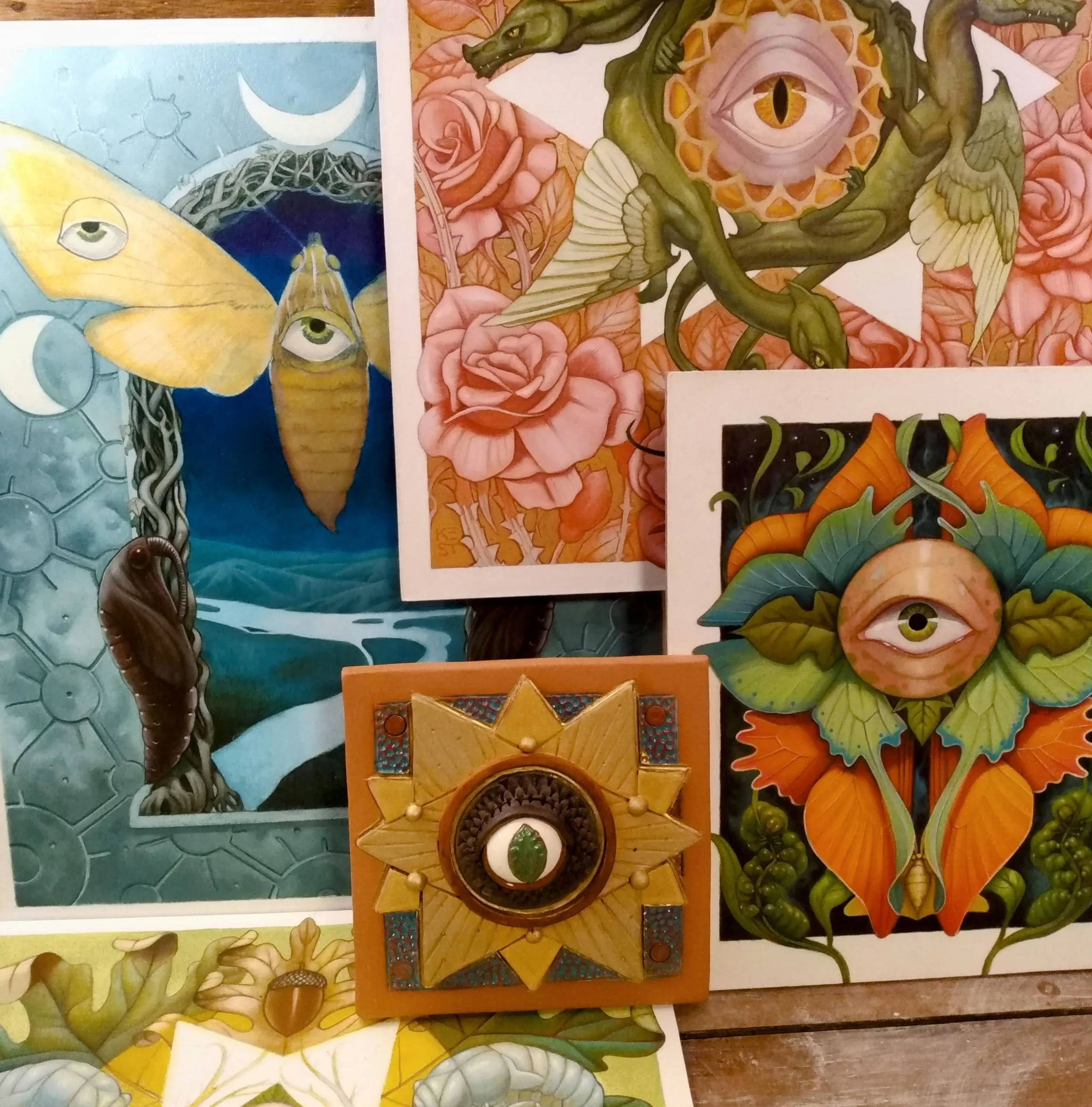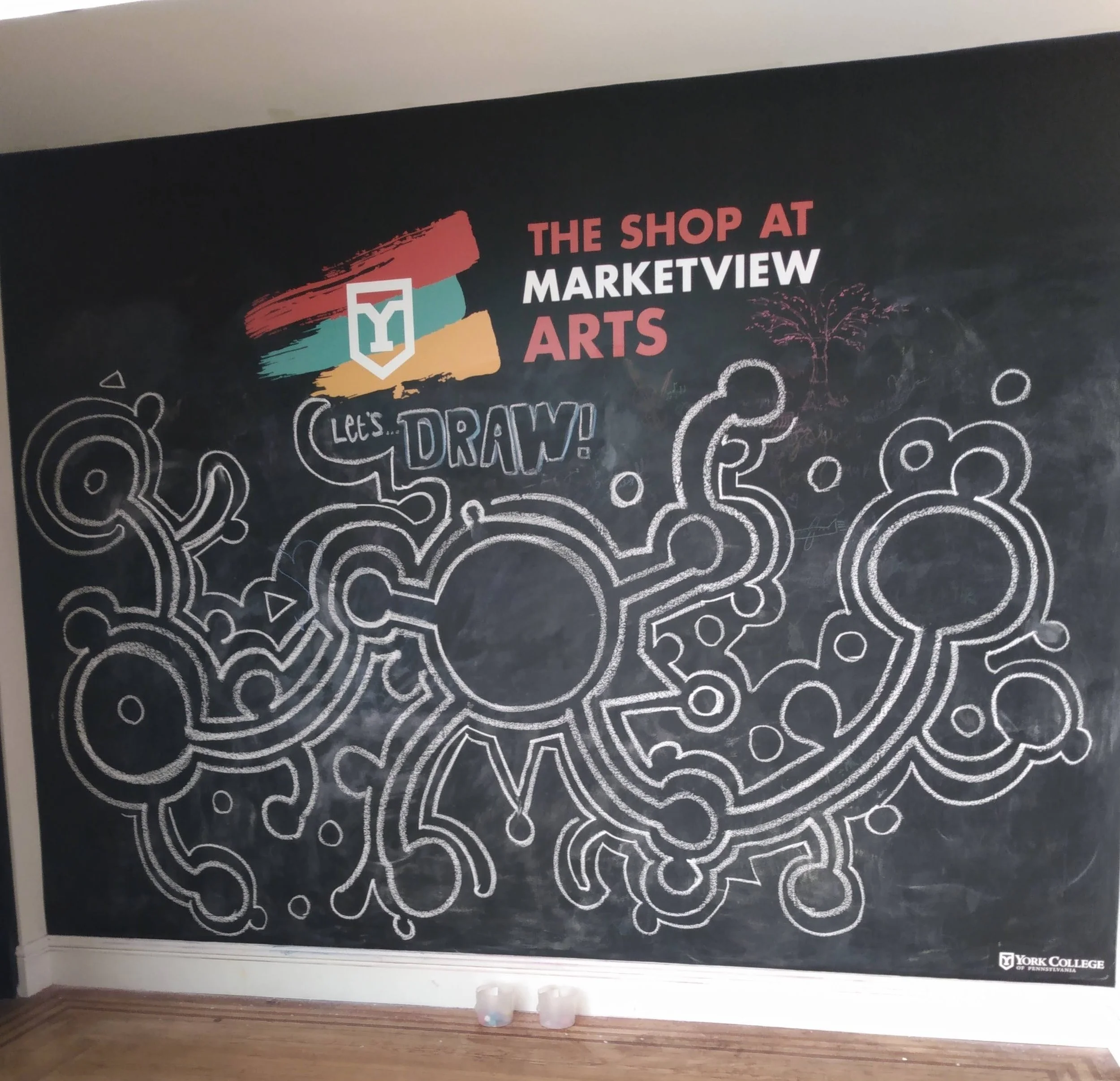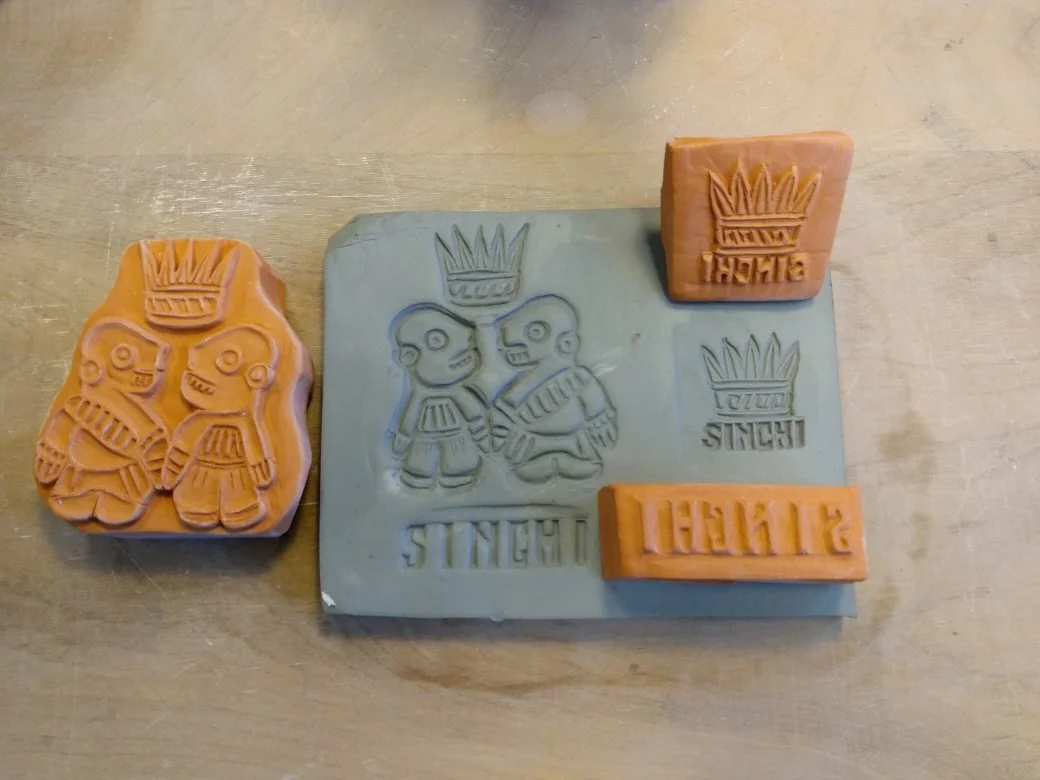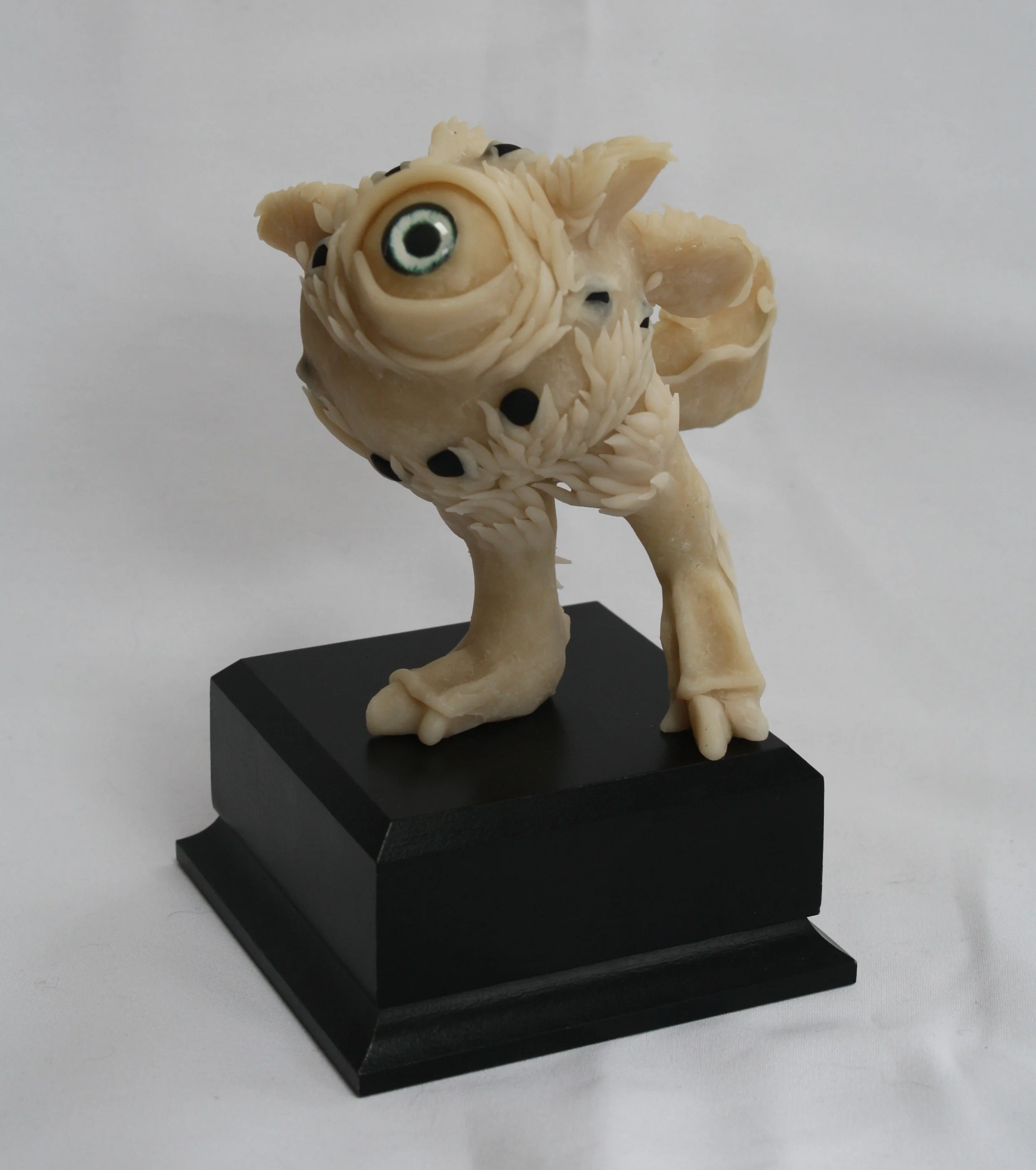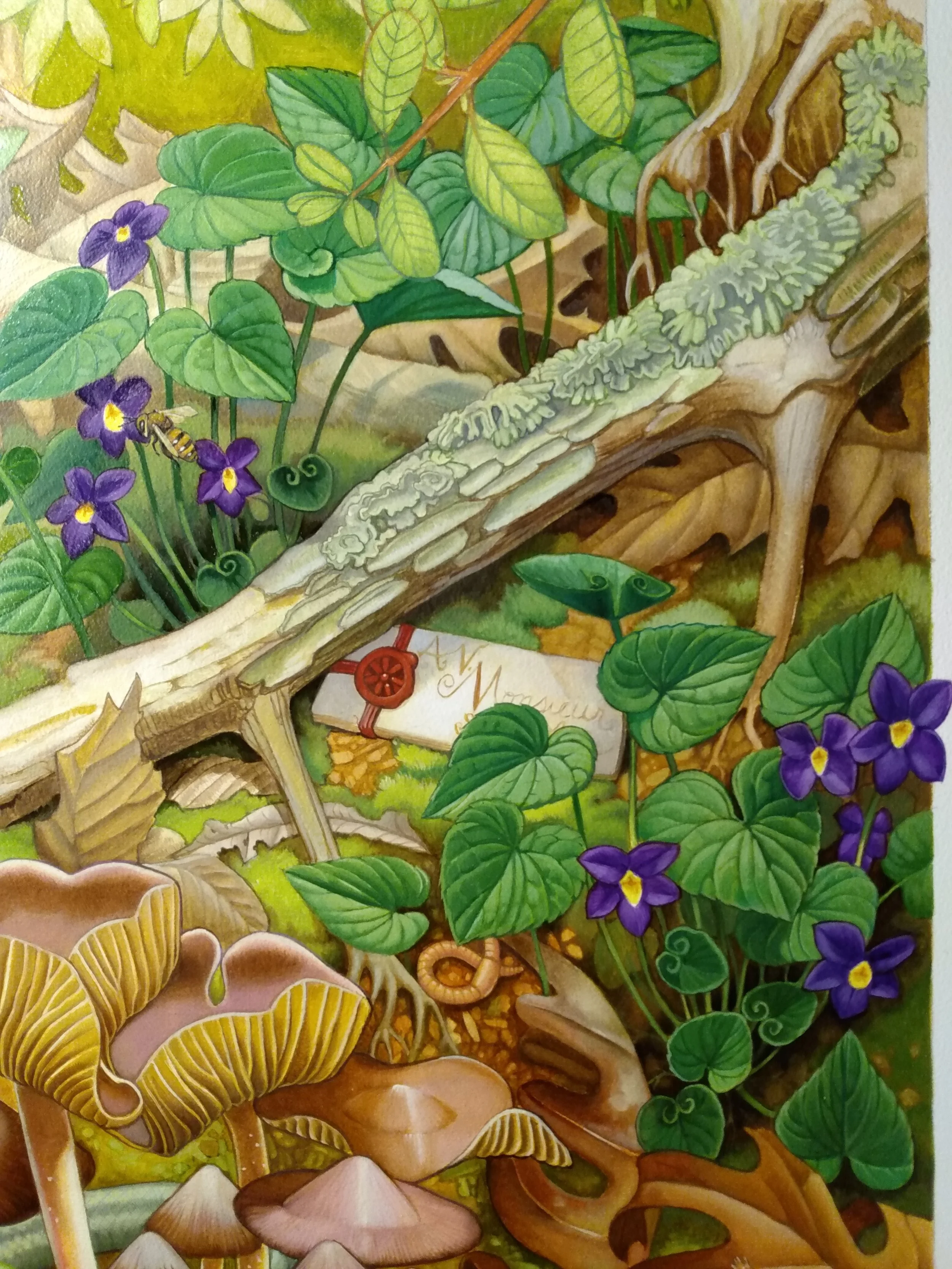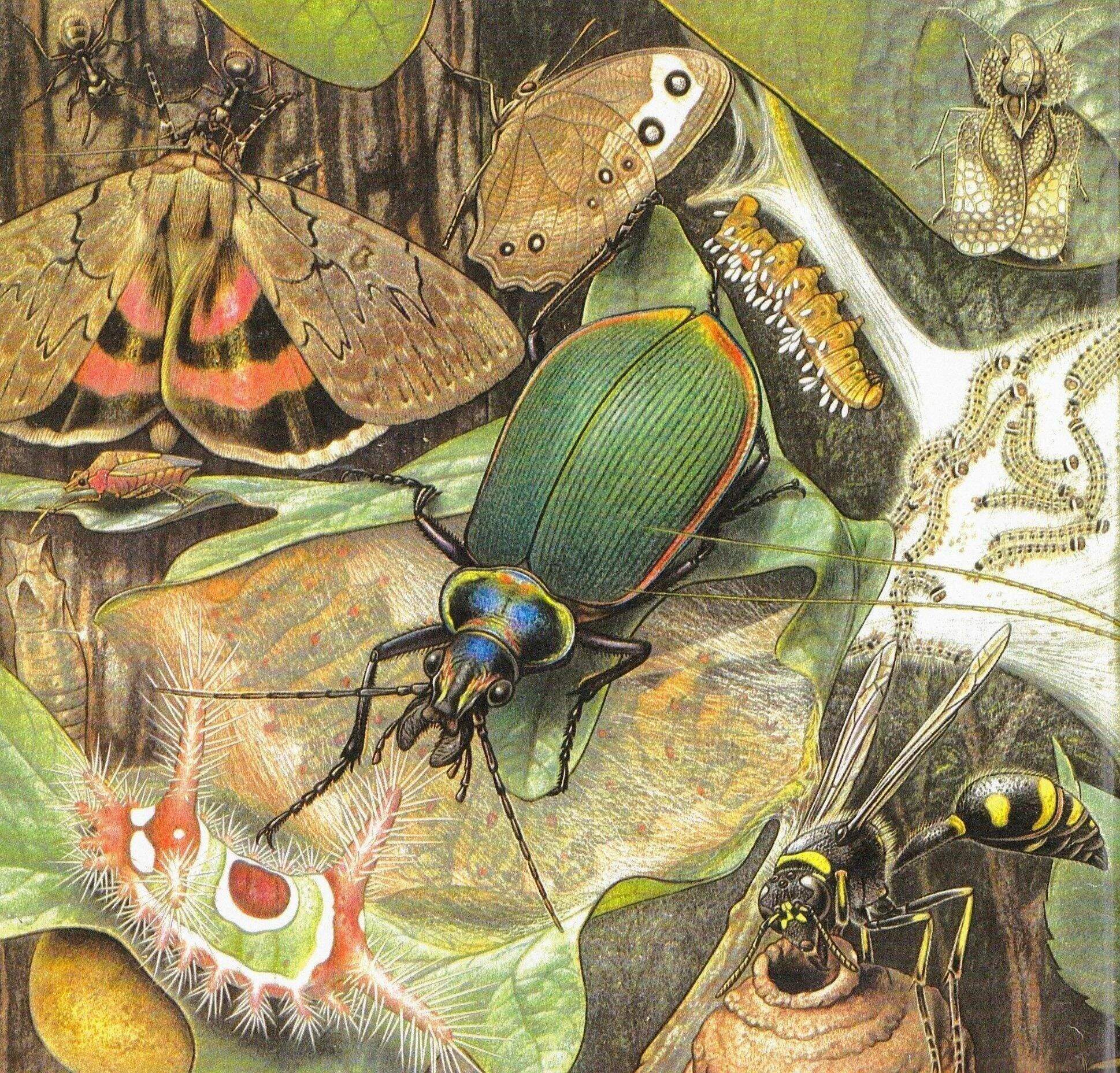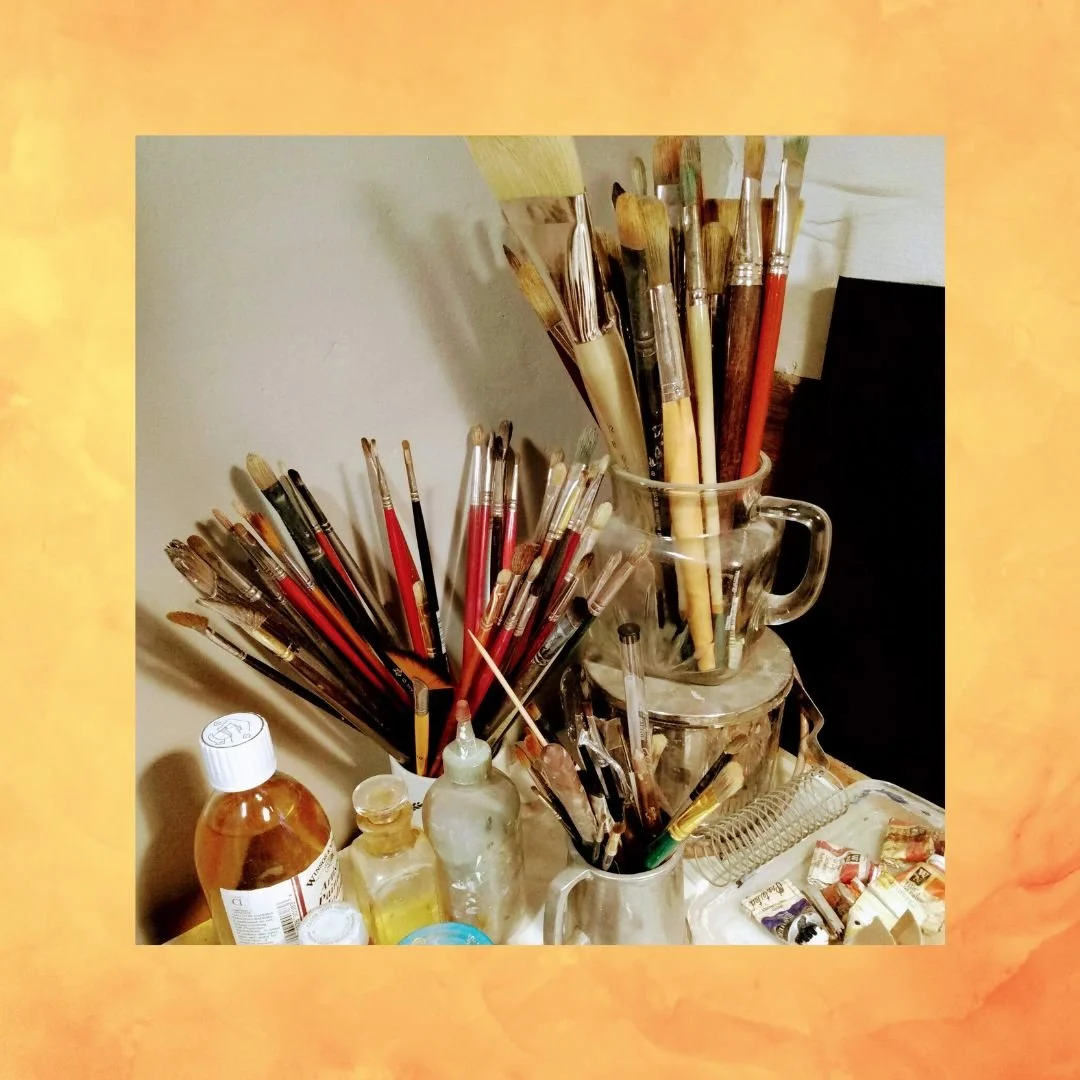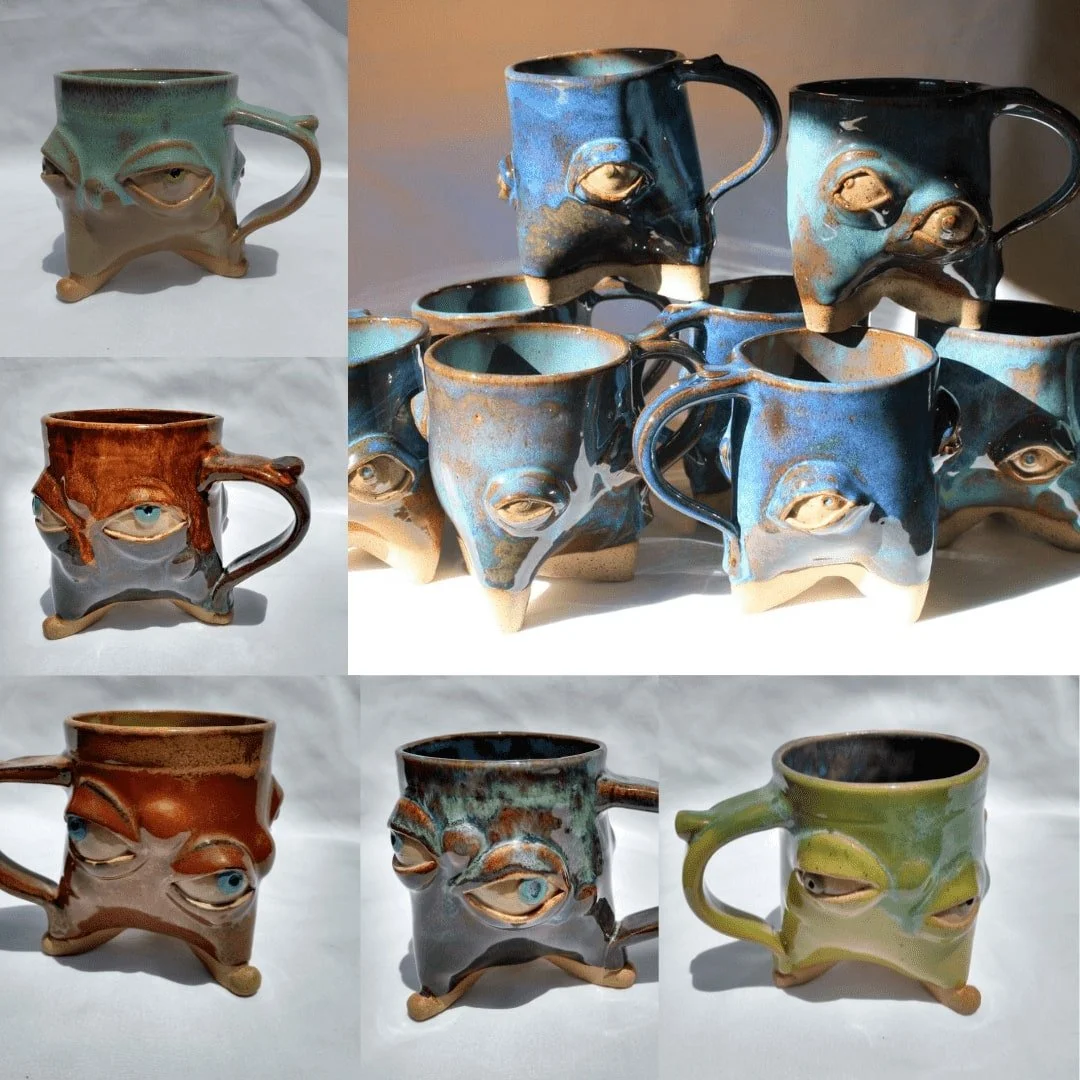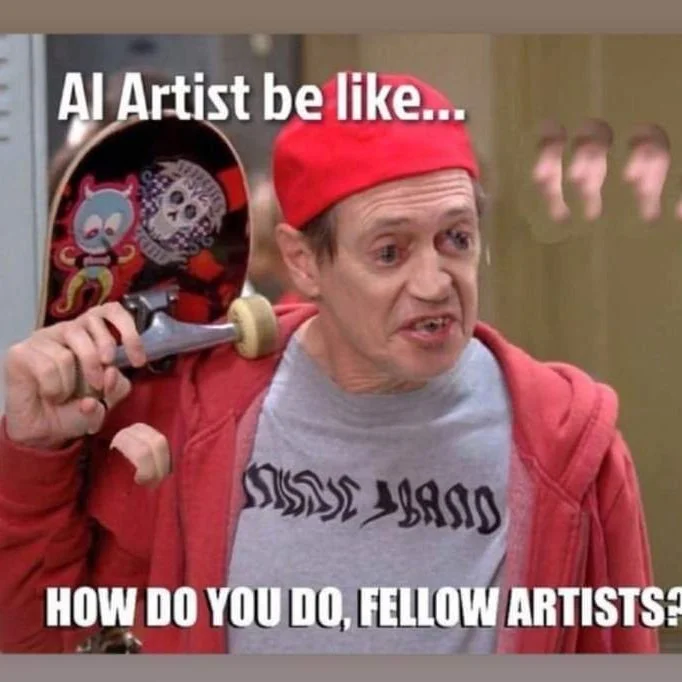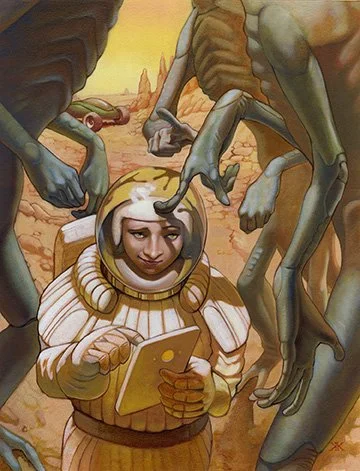Like most kids in the 70s and 80s, I grew up with the traditional and practically obligatory art influences. The works of Norman Rockwell, John James Audubon, Leonardo daVinci printed in old calendars, were hung on the wall or displayed on the coffee table in books (right under the full-color glossy tome of King Tut’s treasures). But it wasn’t until I got into high school when I discovered other, more interesting influences. For a time I was absolutely wild about Aubrey Beardsley and made work in “homage” to his. Alphonse Mucha had a similar effect on me as I attempted to absorb all of that wonderful swoopy design of the Art Nouveau movement. Sometimes I directly “borrowed” elements of it for my own imagery as I learned how to unlock its system.
The influence of of Hokusai and Hiroshige’s block printed art was more subtle. It was with their imagery that I began to understand how to incorporate someone else’s handling of pictorial space into my work without stealing their specific ideas. I began to see the universality of design and how these are shared across artists and cultures and expressed in countless variety.
Finding the work of Maxfield Parrish and JC Leyendecker reinforced this idea. I really liked how Parrish applied his paint in multiple thin layers over a drawing. When I first started to learn oil painting, I used that strategy in my work. The striking design of the large paintings of Georgia O’Keefe stopped me in my tracks and I understood that I wanted to explore more of the intimate botanical world in paint.
And because I lived with Mark Zug for a decade I really do have to count his work and his influences (Frank Frazetta, NC Wyeth) to a large degree. I truly learned how to paint during those years we shared a studio and that approach to painting is still the method I typically use. And, I remain quite fond of all of his subject matter.
But I kept finding more influences.
Sometime in 1989 (?) I was on campus in the great library of UCSD and discovered a giant folio of the works of Walter Linsenmaier which blew my mind. I had an epiphany. Field natural history was a genre of illustration! I was greatly attracted to from the depths of my soul and so I began generating a portfolio of insects and plants.

This image is from Swiss artist Walter Linsenmaier’s book, Insects of the World. Linsenmaier worked in colored pencil on vellum and was a self-taught entomologist (and yes, I have a copy of his book in my library).
Fast forward a decade or so, past college and into my grad school years at MICA and I began to be introduced to more art. In order to grow my practice into a modern one I needed to expand my awareness of what was possible with my work. Gleefully, I glommed on to the slithery paintings of Francis Bacon. Perused the highly contrasting work of Tamara DeLimpicka. Got my eyeballs full of the heroic paintings of Jenny Saville. And I also found some really terrific illustrators and painters I didn’t know much about like Virgil Finlay and MC Escher, both having work that is amazingly, beautifully well-designed.
Currently, I find myself dazzled by a few of the artisans of the American and British Arts & Craft movement, specifically William Morris, Ernest Batchelder, and Adelaide Alsop Robineau as I make the crossover in my mind from 2-d space to the pictorial design space of clay and back again.
Although it’s possible the viewer might catch a glimpse of something in my design that illuminates the pathways I’ve taken to get about my own work, I try to make it so that the specifics of these influences aren’t at all visible. Perhaps that’s not as important as seeing how these artists and their work made me think about creating my own.
What are your influences, gentle Art Gnome? Feel free to share them in the comment section below.
